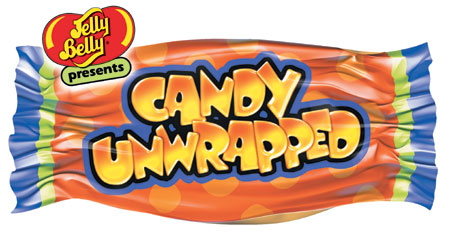Back

There is science in everything,” explains Jo Haas,
the Henry Buhl, Jr., director of Carnegie Science Center. “We
examine the science of everyday life here at the Science
Center, and candy is certainly a favorite part of everyday
life.”
The simple scientific facts are this: Candy
is made from sugar. Sugar is sucrose, a molecule composed
of carbon,
hydrogen, and oxygen. And like all compounds made from
these three elements, sugar is a carbohydrate.
Those who
make candy are actually chemists who transform matter from
one state to another. Sugar has special properties
that make it ideal for candy recipes. Sugar crystals remain
solid at room temperature. But when they are dissolved
in water—the first step in candy making—they
become a solution. The solution is then heated to certain
temperatures, which is when chemical changes occur that
break the sugar crystals apart into molecules and bring
them back together again as the syrup cools.
In
the United States alone, the chocolate industry sells 13
billion dollars’ worth
of chocolate annually, and the average person eats
12.5 pounds of chocolate.
Different
heating levels determine the types of candy: high heat
makes hard candy; medium heat makes soft candy;
and low heat makes chewy candy. Hard candy—peppermint
sticks, fruit drops, clear mints—consists almost
entirely of sugar, with the addition of small amounts of
flavoring and color. Soft candies, such as marshmallows
and jellies, consist of sugar to which no more than five
percent of other ingredients have been added. The third
group of candies—fudge, caramels, and chocolates—contains
large proportions of ingredients other than sugar. “One of the most interesting aspects of candy is
its diversity around the world,” says Mysty Litman,
staff educator for traveling exhibits. “In
Candy Unwrapped, we highlight different regional areas and what’s unique
to each culture.”
Historically, candy has served many purposes. It’s
been used for medication, currency, and tokens of love.
Honey was an important element in candy making in ancient times: Egyptians,
Arabs, and the Chinese made confections of fruits and nuts
candied in honey. And chocolate
was once the preferred drink of the royal courts in Europe. The belief was
that chocolate could cure any illness.
In the United States
alone, the chocolate industry sells 13 billion dollars’ worth
of chocolate annually, and the average person eats 12.5 pounds of chocolate.
Although chocolate is considered a luxury item, it’s relatively inexpensive,
so Americans buy a lot of it.
Apryl Sparbanie, a staff educator at the Science
Center’s Kitchen Theater,
will have the enviable task of treating visitors to demonstrations of candy
making. “We’ll
be featuring guest chefs from regional candy companies performing candy-making
demonstrations,” she says. “We’re also planning a fun adult
evening on July 28 to present the science of pairing wines and chocolate.”
So why, exactly, do we crave chocolate so much? As it
turns out, it really is all in our heads. Chemicals in
the brain, called neurotransmitters, affect
our mood and desire for different
types of
foods. One neurotransmitter is serotonin, which is thought to help us feel
calm and
relaxed. Theoretically, foods high in carbohydrates, like chocolate, may
help boost the amount of serotonin in the brain. Endorphins
are believed to be "feel good" neurotransmitters
that lift a person’s mood. Like serotonin, endorphin levels appear
to be increased by eating fat-containing foods like chocolate.
And if that’s
not a good enough explanation, try this: It simply tastes great.
Back
| Top |